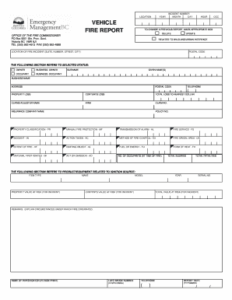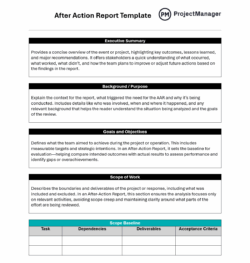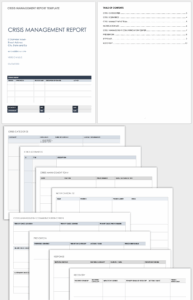In the high-stakes world of emergency services, every incident, big or small, offers an invaluable opportunity for learning and growth. Fire departments constantly face dynamic and unpredictable situations, where quick decisions and coordinated actions are paramount. The ability to reflect on these events, understand what went well, and identify areas for improvement is not just good practice—it’s essential for enhancing operational efficiency, ensuring firefighter safety, and ultimately, providing better service to the community.
This process of critical self-assessment is typically formalized through an After Action Report, or AAR. An AAR serves as a comprehensive document that meticulously details an incident from start to finish, outlining objectives, actions taken, observations, and key lessons learned. It’s a powerful tool designed to transform real-world experiences into actionable knowledge, fostering a culture of continuous improvement within the department.

However, the effectiveness of an After Action Report heavily relies on its structure and consistency. Without a standardized approach, valuable information can be overlooked, and reports might lack the uniformity needed for comparative analysis or long-term trend identification. This is where a robust fire department after action report template becomes incredibly useful, providing a consistent framework that guides every review and ensures all critical aspects of an incident are thoroughly examined.
Why a Standardized After Action Report is Indispensable
A well-designed After Action Report template acts as a cornerstone for departmental development. It allows fire departments to systematically review their performance, identifying strengths that should be sustained and areas that require refinement. This structured approach moves beyond anecdotal reflections, providing concrete data and observations that inform future training, equipment procurement, and procedural adjustments. Ultimately, it contributes directly to the safety of our firefighters and the effectiveness of their response to community emergencies.
Imagine trying to compare the effectiveness of two different incident responses if the reports detailing them are wildly different in format and content. It would be nearly impossible to extract meaningful insights. An unstructured review often leads to missed details, inconsistent reporting, and a lack of a clear, actionable path forward. Without a common framework, lessons learned might remain isolated to specific crews or individuals, rather than becoming institutional knowledge that benefits the entire department.
This is precisely where a fire department after action report template shines. It provides a consistent outline, prompting reviewers to consider every critical aspect of an incident, from initial dispatch to scene demobilization. By ensuring uniformity across all reports, a template makes it easier to track trends over time, identify recurring issues, and measure the impact of implemented changes. It transforms individual experiences into collective wisdom.
Furthermore, utilizing a template integrates seamlessly into the continuous improvement cycle that any high-performing organization strives for. It ensures that after every “do” (the incident response), there’s a comprehensive “check” (the AAR), leading to informed “act” steps (policy changes, training updates). This iterative process is vital for adapting to new challenges, leveraging technological advancements, and maintaining peak operational readiness.
So, what kind of information should typically find its way into such a critical document? A comprehensive template encourages a deep dive into various facets of an incident, ensuring no stone is left unturned.
Key Sections to Include in Your After Action Report Template
To ensure thoroughness and utility, a robust fire department after action report template should include several essential components. These sections help in capturing the full narrative and analytical data of an incident:
- Incident Overview: Date, time, location, type of incident, and weather conditions.
- Responding Units and Personnel: A list of all units and key personnel involved.
- Incident Objectives: Clearly defined goals for the operation (e.g., confine fire, rescue victims).
- Actions Taken: A chronological account of all significant actions, from dispatch to scene closure.
- Observations and Analysis: Detailed accounts of what went well, what could have been done differently, and any unexpected challenges encountered.
- Lessons Learned: Specific insights gained from the incident that can improve future responses.
- Recommendations for Improvement: Concrete suggestions for changes in procedures, training, or equipment.
- Sign-offs: A section for supervisors and relevant personnel to review and approve the report.
Implementing and Adapting Your After Action Report Template
Merely having a fire department after action report template is only the first step; its true value comes from consistent and effective implementation. This involves more than just filling out a form; it requires training personnel on how to use it correctly, fostering an environment where honest self-assessment is encouraged, and ensuring that the insights gained are actively used to drive improvements. Departments should dedicate time to educate all ranks on the purpose and process of AARs, emphasizing their role as a learning tool, not a punitive one.
It’s also crucial to remember that a template is not a static document. Operational environments evolve, new technologies emerge, and the nature of incidents can shift. Therefore, your fire department after action report template should be a living document, subject to periodic review and adaptation. Feedback from crews, command staff, and training officers should be collected regularly to ensure the template remains relevant, comprehensive, and user-friendly. An annual review, or after particularly significant incidents, can help ensure its continued effectiveness.
Once completed, these reports become invaluable historical records. Establishing a centralized, easily accessible repository—whether physical or digital—for all AARs is critical. This archive serves as a rich resource for future training exercises, strategic planning, and performance trend analysis. By making past AARs accessible, new personnel can learn from the experiences of others, and command staff can draw upon a wealth of data to make informed decisions for the department’s future.
- Provide Regular Training: Ensure all personnel understand the importance and proper use of the AAR template.
- Establish a Review Cycle: Periodically assess and update the template based on feedback and evolving needs.
- Create an Accessible Archive: Maintain a centralized system for storing and retrieving completed AARs.
- Foster a Culture of Learning: Encourage open, honest discussion during the AAR process to maximize insights.
The disciplined practice of creating and utilizing After Action Reports is a hallmark of a professional and continuously improving fire department. It transforms every response, drill, and training exercise into a valuable educational opportunity.
By systematically documenting and analyzing experiences, departments can build a robust foundation of knowledge, leading to enhanced operational safety, improved response capabilities, and ultimately, a higher level of service to the communities they protect. This commitment to learning ensures the department remains agile, resilient, and prepared for whatever challenges lie ahead.



